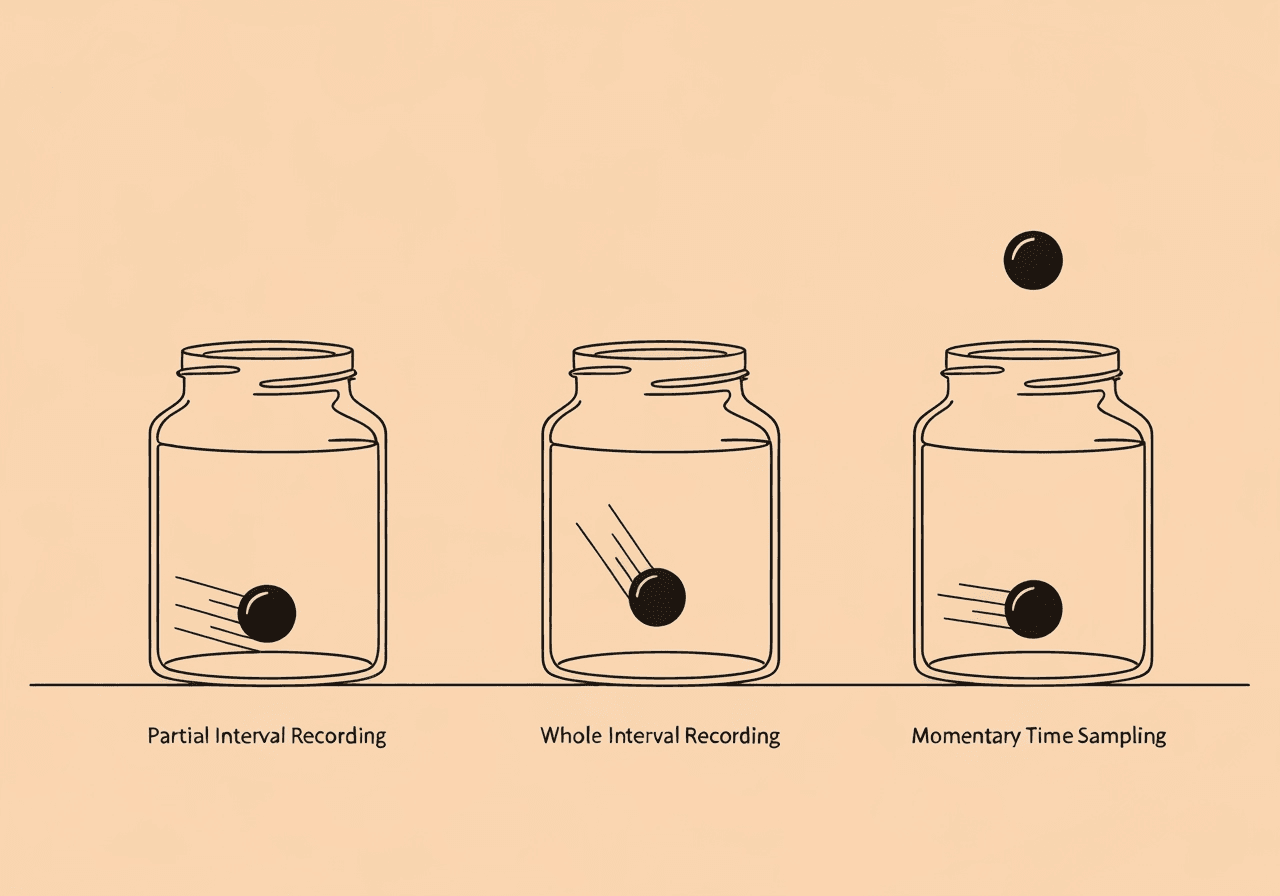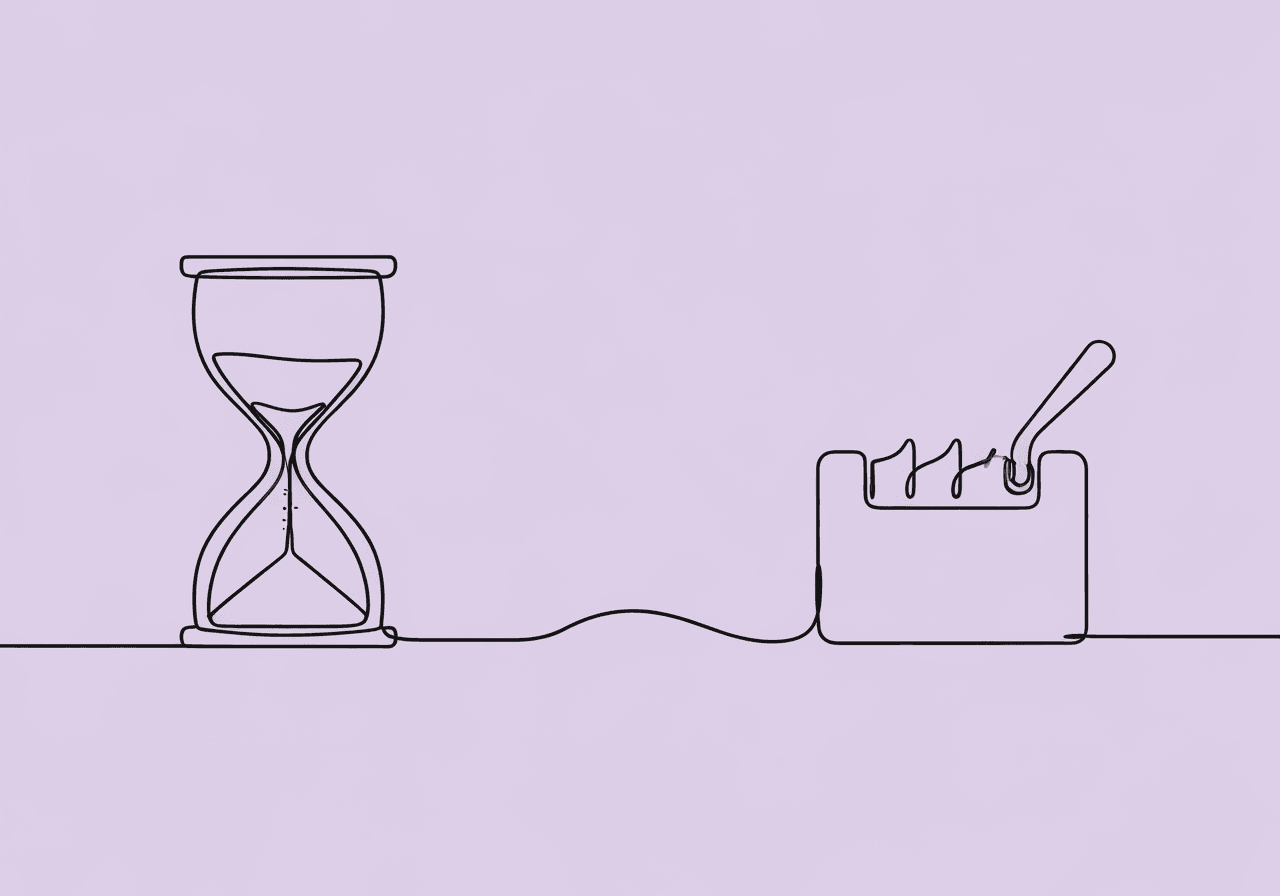Data Stability vs Variability in ABA: A Guide for BCBAs

In ABA practice, where data drives every intervention, grasping data stability vs variability in ABA is key for BCBAs and RBTs. It helps spot predictable patterns versus erratic ones, shaping ethical choices that boost client progress. This guide breaks down the concepts, their role in baselines, decision frameworks, and documentation tips to sharpen your visual analysis.
Here are 5 key takeaways:
- Stable data clusters tightly, signaling reliable baselines for interventions.
- High variability shows scattered points, often needing more data or tweaks.
- Use at least three consistent points to meet stable baseline criteria.
- Document high variability clearly to justify delays or changes.
- Visual analysis ties stability to trends, ensuring changes come from interventions, not chance.
Understanding Data Stability in ABA
Data stability in ABA means consistent behavior measures over time. Points cluster closely with little fluctuation. This lets BCBAs predict behavior and gauge intervention effects.
The Behavior Analyst Certification Board (BACB) task list stresses stable data for visual analysis, aiding trend and level detection BCBA Task List (6th Edition). On graphs, it looks like a flat path with minimal scatter. Picture a child's compliance holding at 80-90% over five sessions. The line stays tight, showing control.
Low stability brings ups and downs that muddle reads. Stable patterns back designs like multiple baselines. Research on visual protocols notes steady paths prove functional ties without extras Visual Analysis Protocols. RBTs, catch this early to skip rash calls.
What Does High Variability Mean in ABA Data?
Variability in ABA gauges spread in repeated behavior measures. High variability means big swings, pointing to inconsistency. Paths zigzag, hinting at unchecked factors or fuzzy targets.
Cooper, Heron, and Heward's Applied Behavior Analysis (3rd ed.) calls it data spread under current setups Applied Behavior Analysis (3rd Edition). Take a learner's outbursts jumping from 2 to 15 per session. The path scatters around the mean. Causes? Uneven prompts or vague definitions.
It's not always a bust—it flags fixes like tighter ops or steady collection. Studies on inspection show experts see high variability as a sign for longer baselines Data Variability Impact. Train RBTs to spot it fast.
For graph basics, see our ABA graph terms.
Why Are Stable Baselines Key for ABA Interventions?
Stable baselines set a solid start in ABA. They let BCBAs track intervention hits right. Meet stable baseline criteria with three steady points, low trend, and little variability—no shifts before changes.
Skip this, and bias creeps in. Say hand-raising scatters from 1 to 8 per session. Pushing ahead hides real effects. Pros extend data till it flats out. The Community Tool Box says stable baselines hug an average with small wiggles, forecasting behavior sans help Baseline Measures Guide.
They aid repeats in multiple baselines. Single-case logic checks if changes stem from the variable, not luck Single-Subject Designs. RBTs, note stability in Praxis Notes templates for strong tracking.
Check BCBA visual prep for more.
When Should You Proceed with Interventions Based on Data Stability vs Variability in ABA?
Visual checks of stability and variability guide intervention calls. Go ahead with low variability and stability—three-plus tight points mean it's time. On-task at 70% steady? Add prompts and watch trends.
Hold back if variability stays high. It flags loose variables or shaky measures. Stretch the baseline for clarity, dodging fakes. Protocols suggest this for wide scatters from context Visual Analysis Protocols.
Here's a quick guide for BCBAs and RBTs:
- Plot data and trace the line.
- Gauge variability: Tight? Move on. Loose? Probe shifts in setup.
- Review length and trend: Flat and steady? Start. Sloping or jumpy? Tweak first.
- Check again after fixes with secure trackers.
This keeps decisions data-led. See ABA measurement guide for picks.
How to Document High Variability and Stability for ABA Decisions
Solid notes on data stability vs variability back choices, claims, and BACB rules. In logs, state patterns straight: "Baseline path low variability (75-85% range), five points hit stable baseline criteria." Tie to moves, like starting intervention.
For high variability, flag sources: "Points scattered (2-12), high variability from uneven prompts; extended baseline." Add graphs or shots, quantify if you can ("High scatter on inspection"). Cite methods for proof.
Tips include:
- Label phases (A baseline, B intervention) with variability notes.
- Nod to standards: "Cooper et al. (2020) led to measure tweaks for high variability."
- Explain holds: "Delayed for unstable baseline to guard validity."
This preps for reviews. Dive into data trend notes.
Frequently Asked Questions
How Does Data Variability Affect Visual Analysis Reliability in ABA?
High variability muddies reliability with scattered paths that hide trends and levels. It's tough to link changes to interventions. Protocols show it cuts observer matches Visual Analysis Protocols. Stretch collection till steady for solid calls.
What Are Stable Baseline Criteria in ABA?
Look for low variability (tight cluster), flat path (no trend), and three-plus steady points. The Community Tool Box says stable baselines have random small shifts around the mean for good predicts Baseline Measures Guide. Vital pre-intervention.
How Does High Variability Impact ABA Treatment Choices?
It flags unreliability, urging holds or shifts to skip noise for progress reads. Often from errors or outsides, per graphing work Graphed Data Guide. Stabilize data first for true ties. For documenting high variability, detail paths and causes in notes to justify steps.
When to Withhold Intervention Due to Variability in ABA?
Hold if high variability and unstable baseline linger after three scattered points sans trend. Avoids mixed results in single-case setups Internal Validity Threats. Gather more for stability first.
What Reduces High Variability in ABA Data Collection?
Sharpen definitions, standardize procedures, train on reliability. Studies push antecedent control and full measures to cut errors Data Collection Guidelines. Check visuals often to catch early.
How Do You Document High Variability for Decisions?
Note the path ("Scattered, 5-20 range"), causes like setting, and links to acts ("Extended per BACB for validity"). Quantify where apt for ethics Visual Analysis Protocols.
Grasp data stability vs variability in ABA to fuel sharp, client-focused calls. Prioritize stable baselines and tackle variability with fixes for ABA's core rigor. Research backs how this lifts intervention wins and ethics.
Review graphs now for stability signs. Log patterns with clear words in notes. Team up on measure changes. Use Praxis Notes for easy, secure tracking to boost your work and client gains.
Popular in Behavior Analysis Concepts
- 1
ABA Prompting Hierarchy & Prompt Fading: RBT How-To Guide with Examples
8737 min read - 2
Partial Interval vs Whole Interval vs MTS: ABA Guide
8226 min read - 3
Functional Behavior Assessment ABA: Complete 2025 Guide [Step-by-Step]
7176 min read - 4
DRA vs DRI vs DRO vs DRL: The Clear RBT Comparison Guide
7139 min read - 5
Master IOA Formulas and Methods for Data Integrity
6238 min read
Popular in Behavior Analysis Concepts
- 1
ABA Prompting Hierarchy & Prompt Fading: RBT How-To Guide with Examples
8737 min read - 2
Partial Interval vs Whole Interval vs MTS: ABA Guide
8226 min read - 3
Functional Behavior Assessment ABA: Complete 2025 Guide [Step-by-Step]
7176 min read - 4
DRA vs DRI vs DRO vs DRL: The Clear RBT Comparison Guide
7139 min read - 5
Master IOA Formulas and Methods for Data Integrity
6238 min read
Related Resources
Explore more helpful content on similar topics

Partial Interval vs Whole Interval vs MTS: ABA Guide
Discover Partial Interval vs Whole Interval vs MTS in ABA: Explore definitions, pros, cons, biases like overestimation and underestimation, and a BCBA decision tree for choosing the best method to ensure accurate data collection and high IOA.

Internal Validity vs Procedural Fidelity in ABA
Explore internal validity vs procedural fidelity in ABA therapy. Learn how BCBAs can use treatment integrity checklists and IOA data to mitigate threats and maintain ethical standards in practice.

Frequency vs Duration ABA: Measurement Guide
Master frequency vs duration in ABA: perfect for tracking tantrums, aggressions, and on-task behavior. This BCBA guide empowers RBTs to select optimal measurement methods for precise data collection and compliance.